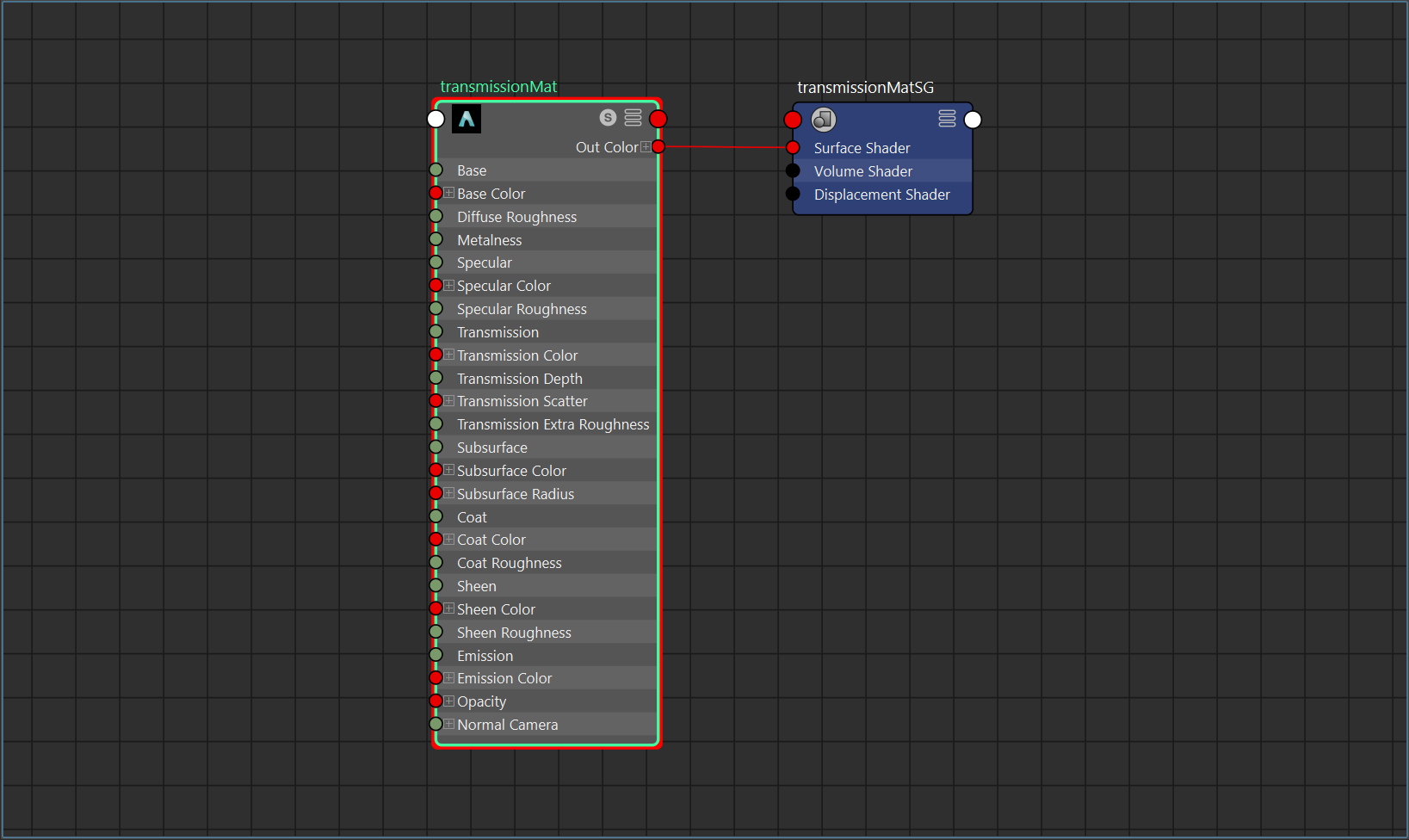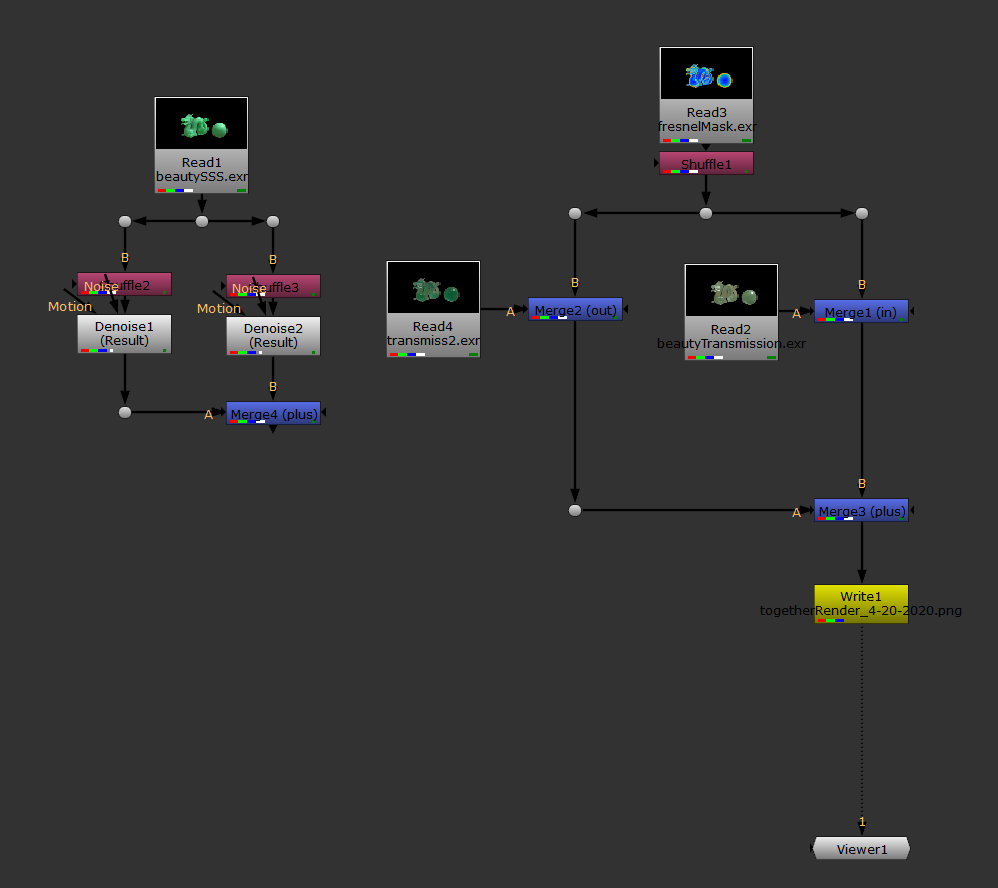I changed somethings around for this project today. Firstly, I switched out TYRA for the Stanford Dragon model, I wasn’t happy with how the shaders were looking on the t-rex and am much happier with how they are coming along now. Secondly, I took out the shadow and occlusion render layers for the moment so I can focus on making the shader(s), they will be added back in later. I split the beauty layer into three other layers (more will surely be added). There is now a Subsurface Beauty layer and 2 Transmission Beauty layers. I also added a Fresnel Mask layer to help me blend the shaders I am making for the various beauty layers.
Fresnel Mask:
The Fresnel Mask layer only has the dragon and sphere, both assigned the same AiStandardSurface shader. Below are images of the Shader Network in Maya, the procedural settings, and what it looks like.
Beauty Layers:
The different aspects that are split between the layers do not have to be different shaders. One shader can be made with transmission and subsurface scattering working together, splitting them up just gives more control in manipulating them in compositing. All of these layers contain what a normal beauty layer would have: the main object(s), world dome, lights, ground plane, etc. The only geometry with Primary Visibility on is what is being integrated (the dragon and sphere). All shaders are AiStanderdSurface.
Subsurface Scattering:
Transmission 1:
Transmission 2:
Nuke:
When compositing these different render layers in Nuke, I opted to not use the Subsurface Scattering layer and instead created a second transmission shader (transmission2) that is different from the initial shader (transmission1). Below is my current Nuke script and the result of merging these two transmission shaders using the fresnel mask.



















